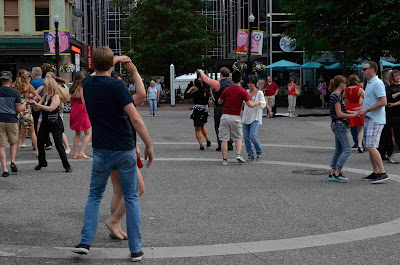This town was at the top of our list of cities we have not visited but wanted to. We started with an unexpected treat, a delicious dinner at China Garden near Manor where we were camped at an Elks Lodge. We usually avoid Asian restaurants in small towns because they are too “American.” China Garden had atypical choices well presented and most tasty. A good start to our time here.
Pittsburgh was booming with steel and coal in the late 1800s. Names like Mellon, Carnegie, Forbes and Heinz are still all over the place. Then it crashed in the 1980s as those industries disappeared and 61% of its workforce were laid off. The “quintessential rust-belt city” is now booming again. Education and medicine are the industries today with several excellent universities on massive campuses and state-of-art medical institutions. The recovery has respected the artistic architecture of the past by repurposing and rehabilitating buildings. PNC, a major bank, is one of the leading investors in restoring Pittsburgh. Taking the upper stories of old buildings and turning them into condos and opening stores needed by residents make the downtown liveable and viable.
Looking at Pittsburgh’s skyline is a bit like gazing at a fantasy forest. Unlike NY or Chicago, these buildings are not so high as to strain one’s neck. They seem to pose so they can be easily admired.
We enjoyed the buildings by taking the Pittsburgh Historical Landmark Society walking tour. Our docent pointed out the large and the small details that have been preserved as the downtown has more than recovered. Our guide explained that all buildings have a base, shaft and capital. He pointed out these details as we admired buildings erected when their facades were works of art. These buildings remain viable with modern businesses like CVS and 7/Eleven replacing the ones that had shut down.
This vintage camera store had items we remembered from childhood. Jerry enjoyed looking at all of the cameras that he owned over many years.
The market square area, designed in 1784. is known as The Diamond and is a place of relaxing, dancing and gathering.
The PPG Building has been described as “Prussian soldiers lining up to impress the peasants.”
G. C. Murphy’s early 1900s art deco building was one of the first variety stores.
The Skinny Building at five feet two inches deep was built in 1926. It is on land once owned by Mellon. Its history is a mystery.
Point Park University is reusing building facades in their reconstruction.
Cast iron was a commonly used material for store fronts.
This is a living mural.
This building has a unique red roof and is an example of the meeting of old and new.
This 1912 building has been described as being Della Robbia blue.
These items on display in the Fairmont Hotel were found when buildings were deconstructed (taken down to their base and rebuilt). The doll is from 1865
and the urns from 1860.
At the end of the walk we stopped at Oyster House, which dates back to 1870, for lunch. The previous owner was a fan of the Miss America Pageant and there are photos throughout the building. The current owner was kicked out as a rowdy kid and vowed to buy the restaurant which he did.
After lunch we continued to wander and take more photos of the architecture. The Allegheny County Court House is a Romanesque Revival building built in 1888 and is still in active use today.
Above are views of the courtyard and the "grand staircase".
The bridge reminded us of the Bridge of Sighs in Venice.





















No comments:
Post a Comment